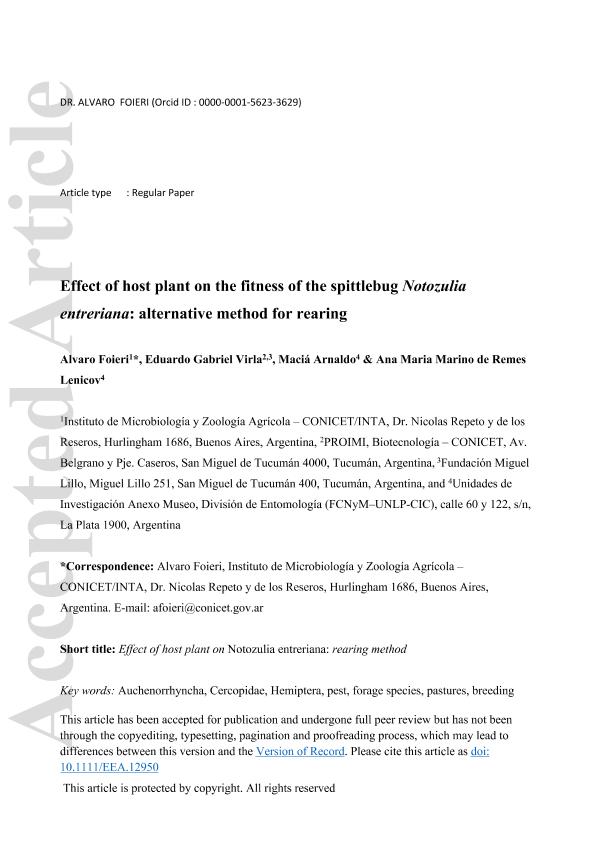Artículo
Effect of host plant on the fitness of the spittlebug Notozulia entreriana: alternative method for rearing
Fecha de publicación:
08/2020
Editorial:
Wiley Blackwell Publishing, Inc
Revista:
Entomologia Experimentalis et Applicata
ISSN:
0013-8703
Idioma:
Inglés
Tipo de recurso:
Artículo publicado
Clasificación temática:
Resumen
Among the species belonging to 11 genera of Neotropical spittlebugs attacking graminaceous plants, Notozulia entreriana (Berg) (Hemiptera: Cercopidae) is one of the most important pests of grasses in several countries of South America. In this study, we evaluate the influence of three economically relevant species of host plants (Poaceae) on life-cycle traits of N. entreriana. We tested for differences in fitness responses (survival and fecundity) of insects on forage species which are frequent hosts for wild populations of spittlebugs. Comparison of life cycles on three host plants showed that only 2.5% of nymphs completed their development on Zea mays L., 22.5% on Chloris gayana Kunth, and 95% on Brachiaria decumbens Stapf. All the above suggests that C. gayana and B. decumbens are able to sustain complete development, behaving like natural hosts; the latter species is superior for artificial colonies because a shorter developmental period, higher survivorship in nymphs, and longer lifespan of adults were observed. Zea mays did not allow proper development, causing high mortality instead. We also developed a new approach for small-scale breeding of N. entreriana, which will enable subsequent biological and behavioral studies on this important pest species.
Archivos asociados
Licencia
Identificadores
Colecciones
Articulos(CCT - LA PLATA)
Articulos de CTRO.CIENTIFICO TECNOL.CONICET - LA PLATA
Articulos de CTRO.CIENTIFICO TECNOL.CONICET - LA PLATA
Articulos(PROIMI)
Articulos de PLANTA PILOTO DE PROC.IND.MICROBIOLOGICOS (I)
Articulos de PLANTA PILOTO DE PROC.IND.MICROBIOLOGICOS (I)
Citación
Foieri, Alvaro; Virla, Eduardo Gabriel; Maciá, Arnaldo; Marino, Ana Maria; Effect of host plant on the fitness of the spittlebug Notozulia entreriana: alternative method for rearing; Wiley Blackwell Publishing, Inc; Entomologia Experimentalis et Applicata; 168; 8; 8-2020; 618-625
Compartir
Altmétricas




